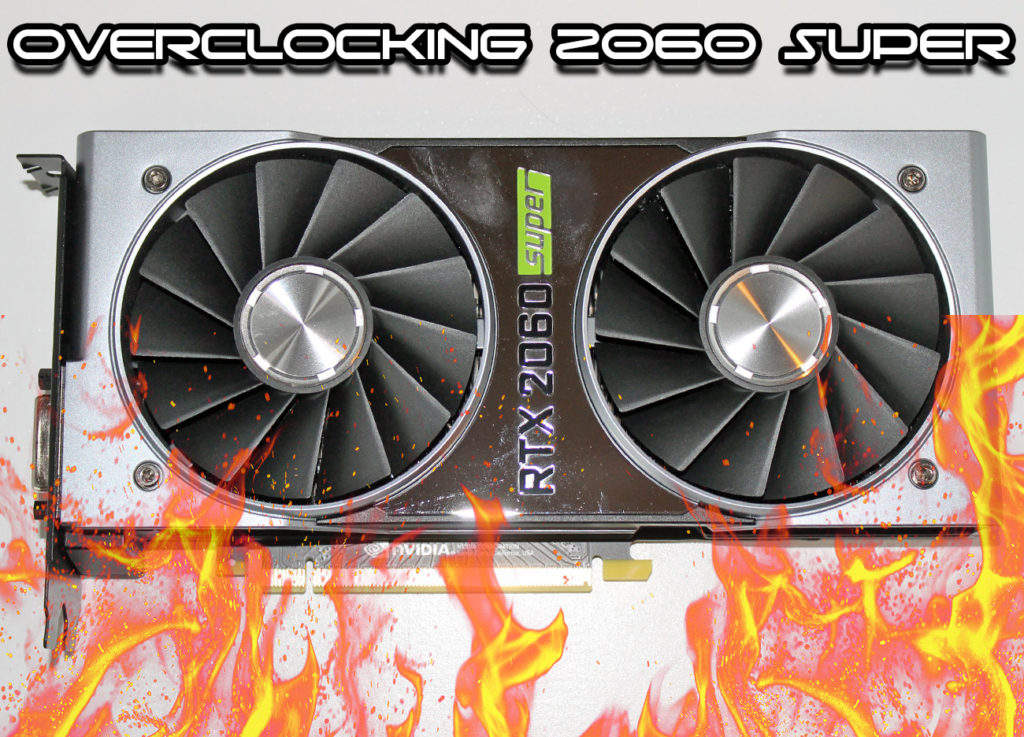Introduction
Last year, we wrote an overclocking article about the GeForce RTX 2070 SUPER FE capabilities and in the interim, we’ve realized that it’s about for us to work our way through the current generation of video cards on the market and do an overclocking article on each so you can see how much headroom each card will have and what performance gains you can expect. Over the past few weeks, in case you missed it, we published the GeForce RTX 2080 Ti FE Overclocking article and the GeForce RTX 2080 SUPER Overclocking article. These overclocking articles will also serve as a basis for our comparison to retail cards as we strap them to the test bench over the next few months.
Our Overclocking Methodology
Overclocking video cards can sometimes be more of an art than a science as there are a number of ways to go about finding the best combination for performance as well as different ways to evaluate the stability of an overclock. To complicate matters further, the final overclocked speed is not what we dial in as our settings but rather what the card will boost to based upon actual gameplay, available power, and thermals.
How Do You Overclock a GeForce RTX 2060 SUPER FE?
This review will show you a high GeForce RTX 2060 SUPER overclock. For the NVIDIA RTX 2060 SUPER FE card, we will approach the overclocking by boosting the power limit to maximum levels within MSI Afterburner (including using the extended range options) and then start increasing the GPU clock speed until we find the highest stable value. We will then do trial and error to see what, if any, additional performance we can get from adding additional voltage to the GPU. Once we’re set with the most we can expect from the GPU, we turn to the memory with a stock GPU clock and see what it can do. Once we find these individual values, we work on increasing them in tandem until we find the best performing combination between the GPU overclock and memory overclock.
An overclock can be considered stable when multiple hours of several different games can be played on it without it crashing. Over the years, we’ve found that synthetic benchmarks or testing a single game is not an effective way to determine the stability of an overclock, so we take our time to make sure that we can throw any task at it without crashing. As a result, our highest achieved overclocks may end up being lower than you see elsewhere and that’s simply due to our stability bar being set higher.
NVIDIA GeForce RTX 2060 SUPER Founders Edition
Let’s recap what the GeForce RTX 2060 SUPER Founders Edition is all about as it has been a while since its July 2, 2019 launch. The GeForce RTX 2060 SUPER Founders Edition launched at a suggested retail price of $399 which placed it between the GeForce RTX 2060 Founders Edition at $349, the GeForce RTX 2070 Founders Edition at $449 and the GeForce RTX 2070 SUPER Founders Edition at $499. Over time, we’ve seen some pricing adjustments to the RTX 2060 cards to as low as the $300 mark to better compete with AMD’s Radeon 5600 XT, but the higher end cards have mostly held steady. The Founders Edition allows for a 175W board power and a 1650MHz boost clock.
The GeForce RTX 2060 SUPER sports 8GB of 14GHz GDDR6 memory, a 256-bit memory interface, 64 ROPS, 2,176 CUDA cores and 272 Tensor cores using the Turing TU106 GPU. It sports a single 8-pin PCIe power connector, twin fans, three DisplayPort, one HDMI, and one USB Type-C connection. For additional background, check out our full review here.

